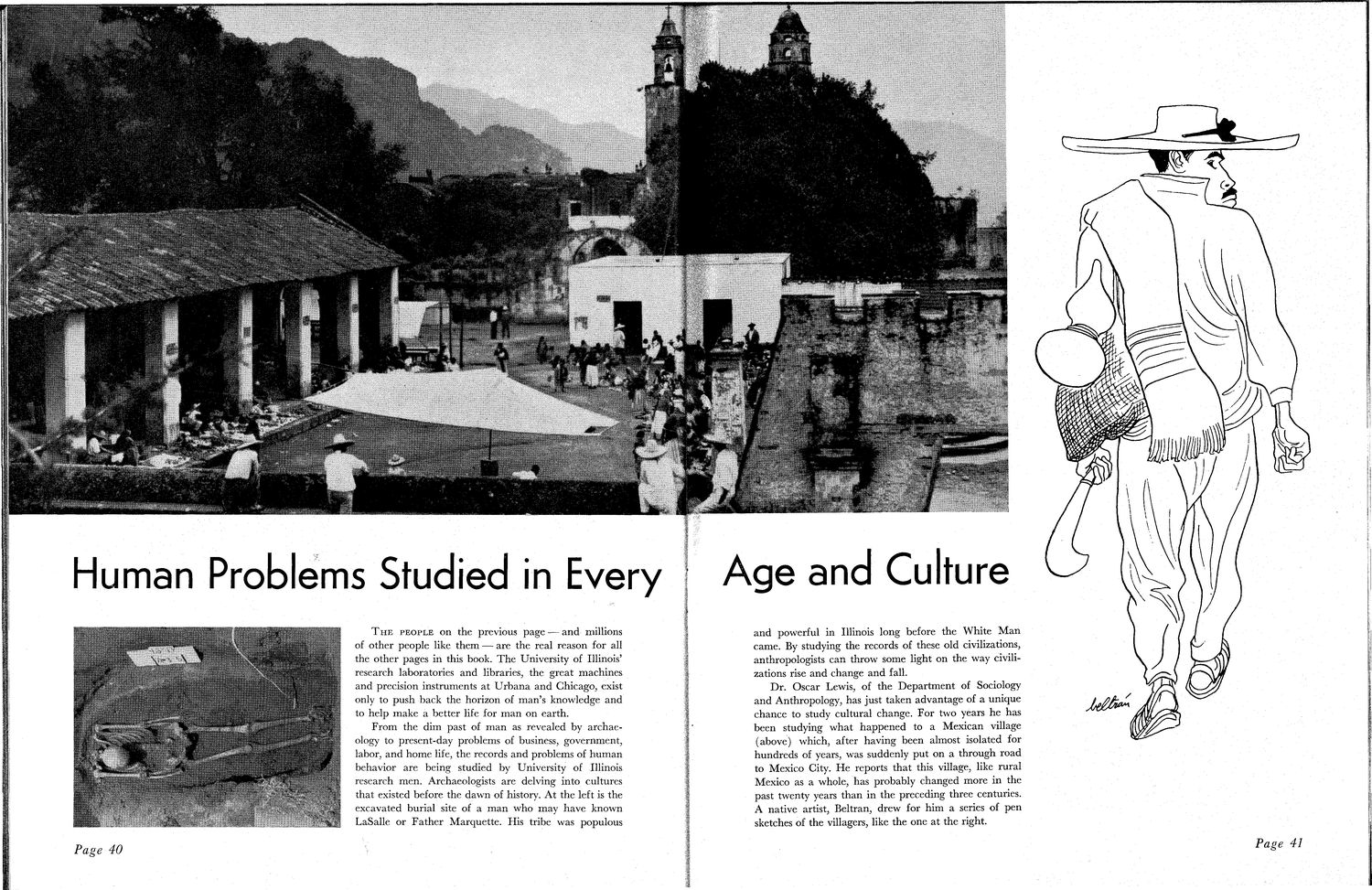| |
| |
Caption: Book - Research on Campus (1949)
This is a reduced-resolution page image for fast online browsing.

EXTRACTED TEXT FROM PAGE:
Human Problems Studied in Every T H E PEOPLE on the previous page — and millions of other people like them — are the real reason for all the other pages in this book. T h e University of Illinois' research laboratories and libraries, the great machines and precision instruments at Urbana and Chicago, exist only to push back the horizon of man's knowledge and to help make a better life for man on earth. From the dim past of man as revealed by archaeology to present-day problems of business, government, labor, and home life, the records and problems of h u m a n behavior are being studied by University of Illinois research men. Archaeologists are delving into cultures that existed before the dawn of history. At the left is the excavated burial site of a man who may have known LaSalle or Father Marquette. His tribe was populous Age and Culture and powerful in Illinois long before the White M a n came. By studying the records of these old civilizations, anthropologists can throw some light on the way civilizations rise and change and fall. Dr. Oscar Lewis, of the Department of Sociology and Anthropology, has just taken advantage of a unique chance to study cultural change. For two years he has been studying what happened to a Mexican village (above) which, after having been almost isolated for hundreds of years, was suddenly put on a through road to Mexico City. H e reports that this village, like rural Mexico as a whole, has probably changed more in the past twenty years than in the preceding three centuries. A native artist, Beltran, drew for him a series of pen sketches of the villagers, like the one at the right. Page 40 Page 41
| |